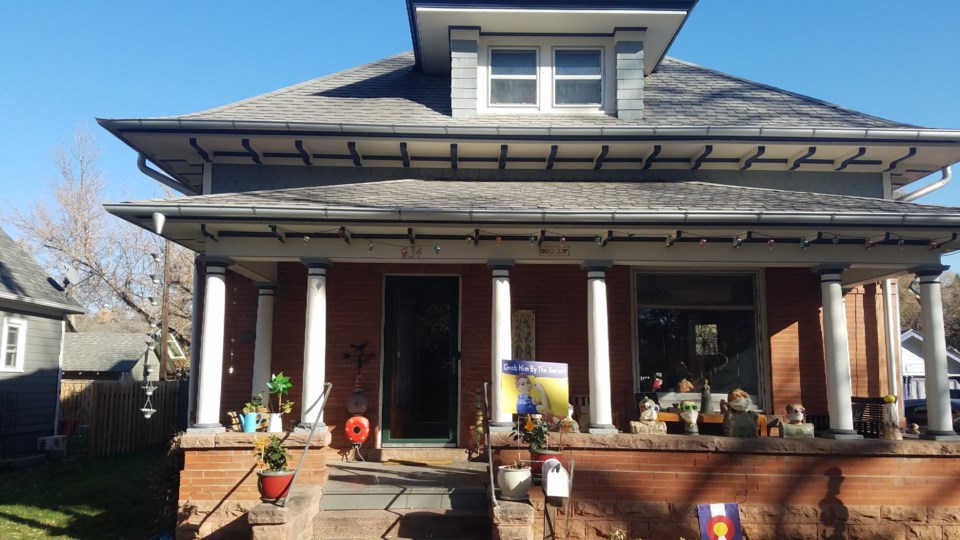One of Longmont’s oldest homes could be designated as a local historical landmark for its unique construction and ties to an accomplished local builder.
Longmont’s Historic Preservation Commission on Thursday will consider making the residence at 534 Emery St. — also known as the James Wiggins House — a historic landmark.
The current owners of the house, Sharon O’Leary and Nigel Pilling, have applied for the designation for the revival/classic cottage home. The house includes paired doric columns, decorative shingles and cornice, a dormer flared eave and a two-story carriage house, according to a staff report to the commission. The carriage house is believed to have been built between 1900 and 1906.
The house was built in 1902 by James Wiggins, a prominent builder for the Chicago Colony, a settlement that later became Longmont, according to an application for historic status submitted by the home’s owners.
“Wiggins significantly contributed to the development of Longmont and was known for building some of the most beautiful homes in Longmont, including the Callahan and Steuerwald residences,” the landmark application states. “Wiggins became Longmont’s preeminent contractor earning a reputation for quality work and honest dealings.”
Wiggins, the applicants stated, also served as city alderman from 1893 to 1894.
O’Leary and Pilling stated their home qualifies for historic designation under several categories:
- Wiggins was a “person who significantly contributed to the development of Longmont culturally, artistically, economically and politically.”
- The home is identified as the work of an architect or master builder whose individual work has influenced the development of Longmont.
- The home embodies elements of architectural design, detail, materials or craftsmanship that represent a significant architectural innovation.
The detail and quality of the craftsmanship in building the house indicate the Wiggins family wanted the residence to advertise their construction business, the application states.
Historically designated homes are eligible for tax credits for certain types of rehabilitation and restoration work, said Jade Kruger, associate planner for the city. Reroofing is an example of an eligible cost, Kruger said.
Any work on the exterior of the home or additions require approval from the Historic Preservation Commission, she said.
The Historic Preservation Commission meets at 5 p.m. Thursday.



